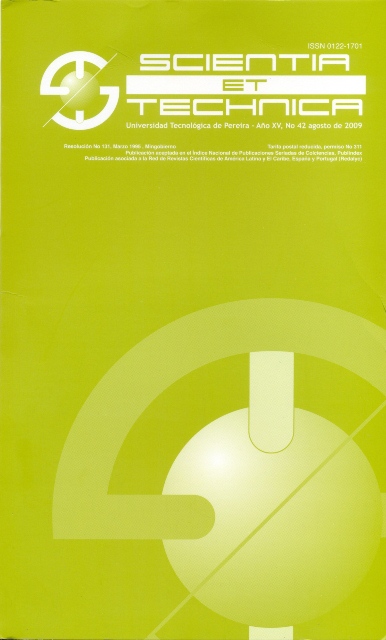Remoción de cromo de aguas residuales de curtiembres usando quitosan obtenido de desechos de camaron
DOI:
https://doi.org/10.22517/23447214.2679Abstract
El cromo es el mayor contaminante en la industria de curtiembres. El método de precipitación química es empleado para remover cromo pero su uso conduce a la formación de precipitados de este metal. El intercambio iónico y la separación por membrana son tratamientos costosos. En este estudio se empleó quitosano como bioadsorbente para remover cromo de las aguas residuales de la industria de curtiembres. El quitosano adsorbió 52 mg Cr (III)/g a un pH de 4.0. Modelos Langmuir and Freundlich fueron aplicados; observándose que un incremento en la concentración inicial de cromo trae como consecuencia una disminución en el proceso de adsorción.Downloads
Downloads
-
Vistas(Views): 4830
- PDF (Español (España)) Descargas(Downloads): 3281
Published
How to Cite
Issue
Section
License
Copyrights
The journal is free open access. The papers are published under the Creative Commons Attribution / Attribution-NonCommercial-NoDerivatives 4.0 International - CC BY-NC-ND 4.0 license. For this reason, the author or authors of a manuscript accepted for publication will yield all the economic rights to the Universidad Tecnológica of Pereira free of charge, taking into account the following:
In the event that the submitted manuscript is accepted for publication, the authors must grant permission to the journal, in unlimited time, to reproduce, to edit, distribute, exhibit and publish anywhere, either by means printed, electronic, databases, repositories, optical discs, Internet or any other required medium. In all cases, the journal preserves the obligation to respect, the moral rights of the authors, contained in article 30 of Law 23 of 1982 of the Government Colombian.
The transferors using ASSIGNMENT OF PATRIMONIAL RIGHTS letter declare that all the material that is part of the article is entirely free of copyright. Therefore, the authors are responsible for any litigation or related claim to intellectual property rights. They exonerate of all responsibility to the Universidad Tecnológica of Pereira (publishing entity) and the Scientia et Technica journal. Likewise, the authors accept that the work presented will be distributed in free open access, safeguarding copyright under the Creative Commons Attribution / Recognition-NonCommercial-NoDerivatives 4.0 International - https://creativecommons.org/licenses/by-nc-nd/4.0/deed.es license.



